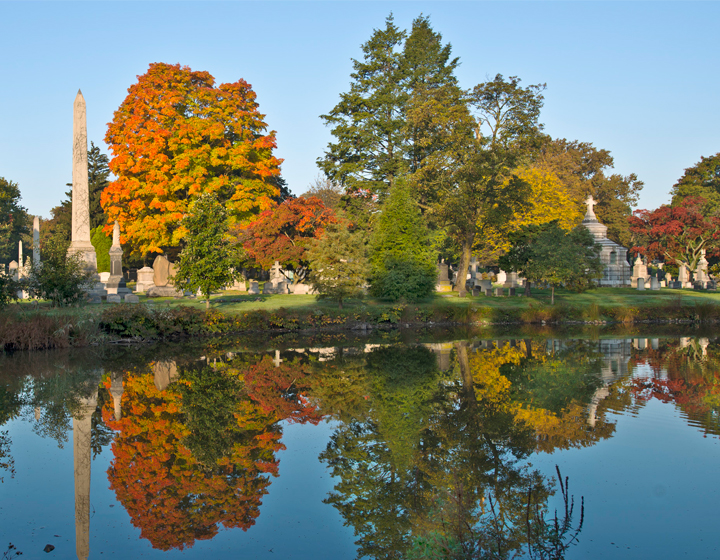ArbNet Connects Arboreta Around the World
A Taiwanese botanical garden is working with a Philippine university to document and conserve tree species threatened by typhoons. Botanical gardens in Armenia and Tajikistan are cooperating to protect ancient old-growth trees. A botanical garden in South Africa has helped a nearby college become accredited as an arboretum by ArbNet, the interactive community of arboreta based at The Morton Arboretum.
They are among the many examples that show how ArbNet, in a little more than a decade, has become a crucial connector between tree-focused public gardens and other institutions around the world in their efforts to grow, conserve, care for, and celebrate trees.
“The network is succeeding in encouraging collaboration, research, and outreach about trees around the globe,” said Murphy Westwood, PhD, the Arboretum’s vice president of science and conservation. “It’s also encouraging more institutions to think of their trees as arboretum collections and to become more ambitious about contributing to education, science, conservation, and outreach.”
Funded and staffed by the Arboretum with the support of its generous donors, ArbNet provides a way for tree-focused institutions to find each other and collaborate for the future of trees.
For example, 18 arboreta in the ArbNet network from a variety of ecoregions across the United States have planted plots of black cottonwood, balsam poplar, and their hybrids to help researchers at several universities study how environment and ancestry affect the growth of poplar trees and tease out the effects of climate change, with outreach involving middle school students collecting data. “These mini poplar common garden experiments will provide a rich resource for both research and education across the country for many years to come,” said Jill Hamilton, PhD, a professor at Pennsylvania State University who leads the project.
ArbNet also operates an accreditation program that sets standards for arboreta. Around the globe, 662 accredited institutions in 40 countries have met requirements that begin with documentation, and care and labeling of their trees. At higher levels of accreditation, they commit to working in tree science and conservation, with a strong focus on collaboration.
Among the ways ArbNet forges links is through an international Partnership Program with Botanic Garden Conservation International (BGCI). The program gives grants to BGCI member institutions and ArbNet accredited arboreta to team up on conservation projects. “They are finding common ground in shared research goals and collaborative projects,” said Sue Paist, ArbNet coordinator.
One example of the grants’ impact is the collaboration between the Northwestern University Ecological Park & Botanic Gardens in the Philippines and the Dr. Cecilia Koo Botanic Conservation Center in Taiwan, which focused on conserving trees in a biodiversity hotspot prone to typhoons. A Conservatory of Exceptional Philippine Species has been named in honor of ArbNet and its work.
As it has grown, ArbNet has reached far beyond the traditional image of an arboretum as an institution like The Morton Arboretum, with land set aside to grow and care for a formal, strategically selected collection of trees. Among the 662 accredited arboreta are colleges, zoos, historic estate properties, corporate campuses, retirement communities, wellness centers, sculpture gardens, cemeteries, schools, suburban villages, a whiskey distillery, a golf course, and an American Legion post in southern Illinois.
By meeting the basic standards for accreditation, every one of these institutions has focused on its trees and committed not only to caring for them but to highlighting them in a new way. “These new, nontraditional arboreta that are coming on board would never have done this without ArbNet,” Paist said. “It’s brought excitement and recognition to them for valuing their trees and for engaging their communities about them.”
Institutions of all sizes often use the accreditation standards as a road map for improving their programming and operations as they advance through the four levels, according to Paist. “We offer toolkits and resources that are built from our network knowledge,” she said.
Many more arboreta are on the way. More than 2,393 institutions have listed themselves on ArbNet’s Morton Register of Arboreta—1,229 in the U.S. and 1,164 abroad. That voluntary listing is the starting point for many accreditation applications, as well as a way for other arboreta and organizations to find collaborators.
“The arboreta become a network in themselves, and they help recruit more institutions,” Paist said.
Andrea Brennan, PhD, ArbNet’s leader, delightedly recalled a recent continuing education workshop of an Illinois cemetery trade group at which she described how other cemeteries such as Green-Wood in Brooklyn and Laurel Hill Cemetery near Philadelphia have become ArbNet accredited arboreta.
“I could see people in the audience realizing that their cemetery is a place of old trees that have seen some things, a place of history and a community asset,” Brennan said. “I could hear plans developing over lunch for how their own cemeteries could encourage visitors to engage with their trees.”

Woodlawn Cemetery & Arboretum in Toledo, Ohio, is one of a number of cemeteries that have become accredited arboreta through ArbNet, the interactive community of arboreta based at The Morton Arboretum.
Accrediting arboreta such as cemeteries, schools, and parks is a way of taking messages about the value of trees to an audience that might not be able to get to a major arboretum. “All these institutions have to meet a standard of education and outreach,” Paist said. “They label their trees, they have walking tours, they have Arbor Day celebrations. We are creating and inspiring tree champions everywhere.”
While new arboreta are accredited, existing arboreta become more ambitious, not just to care for their trees, but to find ways to grow their collections, build their education programs, and embark on new science and conservation initiatives. They look to ArbNet to help. “We have so much potential ahead of us,” Brennan said. “It’s going to be really exciting to see what we can do.”